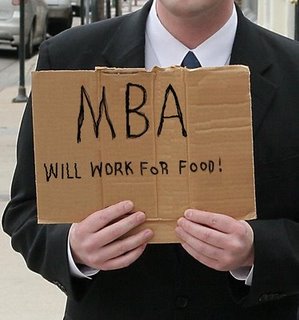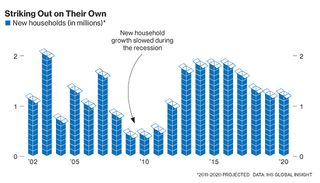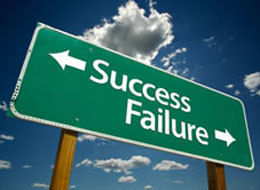Last week, I began a discussion on the possibility of real estate companies focusing their recruiting efforts on the large demographic of young people who are either unemployed or underemployed.
 At the end of the discussion, I posed the question of whether you, as a real estate owner or hiring manager, believe it is worth it to focus a significant portion of your recruiting effort on this group of candidates. I received some great comments back.
At the end of the discussion, I posed the question of whether you, as a real estate owner or hiring manager, believe it is worth it to focus a significant portion of your recruiting effort on this group of candidates. I received some great comments back.
There seems to be a small group of our readers who are legitimately excited about engaging, hiring, training, and mentoring young people toward success. However, there are many others who are not so hopeful. I’ve heard many polite, but weak-hearted responses among many of the managers whom I’ve met with in-person over the last several months…typically along the lines of…”I see what you’re saying, Ben” or “That’s interesting information.” But in their eyes, there is no passion toward truly pursuing these types of candidates.
In an overarching sense, I suspect that this lack of passion is rooted in the resistance that every human being naturally feels toward change. The specific reasons this particular change in hiring focus would not be good for your company or office probably varies significantly.
Rather than trying to identify and address those underlying causes, I think it may be more helpful to address some of the common myths that exist regarding young candidates. In doing so, I believe that some of the resistance that you feel may dissolve in the face of the potential and opportunity that young candidates bring to the table.
Myth #1: Young people are not motivated. If you flip through the channels during primetime, it does  seem that young people (especially young men) are often portrayed as unmotivated or focused on the wrong things. Or maybe you know someone personally who has an adult child living at home, who spends way too much time playing video games and surfing the web. Your concerns have some validity.
seem that young people (especially young men) are often portrayed as unmotivated or focused on the wrong things. Or maybe you know someone personally who has an adult child living at home, who spends way too much time playing video games and surfing the web. Your concerns have some validity.
However, I encourage you to look at statistics that quantify the issue before you disregard this whole demographic slice of society. Most economists agree that about 3% of the population is unemployable (i.e. they can’t keep a job) at any given time. When I was in the military, we used to call these folks the “sick, lame, and lazy.” This would amount to four to five million workers in the U.S. who are deemed “unemployable.”
Even if all 3% of these unemployables were in the above mentioned (young) group (and they’re not), 15 million employable candidates would remain in the pool. Just selecting the most motivated 10% of this group, could replace the number of real estate agents 55 and older, three times over. The numbers are simply too large to make the generalization that this whole demographic group is unmotivated. There are several million young, educated, and motivated candidates who could not only do the job, but dwarf the motivation level of many of your current agents.
Myth 2: Young people have limited resources. The most common complaint I hear from owners and hiring managers is that the candidates they are interviewing do not have the financial backing (start-up money, ability to go without income for awhile, etc.) to start a career in real estate.
The tendency is to focus on the individual candidate as we wring our hands over this problem: If a candidate doesn’t have the financial ability to start a real estate career, disregard that person and find someone who does… This is a great plan until you realize there is a very limited number of financially stable candidates available. If you do happen to find one of these rare beings, you’ll quickly notice they have other options outside of real estate.
I encourage you to take one step back. While most everyone has financial challenges, who has the highest probability of solving their financial problems as they start a real estate business? I would argue that it is young people, for the simple fact that they do not have the expenses and responsibilities of a middle-aged person. If they are living with their parents–no spouse, no kids, and limited monthly expenses–it is much easier to survive a startup period.
In addition, an adult child living at home has a much better chance of overcoming the financial obstacles than someone on their own. Why? Quite often, these candidates have motivated parents. Getting junior out of the house and established in a career of their own is not only a priority for many parents, it is quite often something they are willing to put some finances towards.
3. Young people do not have a large enough network (sphere of influence) to be successful. One of the comments I got back from a top performing hiring manager in one of the midwest markets sheds some light on this issue:
“I truly believe that this group of candidates has a lot to offer to our industry for a number of reasons. [One of the important reasons is that] they are in the age group that has many friends of their own that will be entering the housing market, if not themselves, as well.”
 I once read that railroad executives of the late 19th century never imagined that that their competitors would one day be metal tubes that flew thousands of feet in the air, without the need for steel tracks and other infrastructure. Nor did real estate agents, even 20 years ago, imagine that a person could sit in their house and have free access to hundreds of millions of other people both in their neighborhoods and around the world, through the internet and social networks. What’s even more strange is that we call these people friends!
I once read that railroad executives of the late 19th century never imagined that that their competitors would one day be metal tubes that flew thousands of feet in the air, without the need for steel tracks and other infrastructure. Nor did real estate agents, even 20 years ago, imagine that a person could sit in their house and have free access to hundreds of millions of other people both in their neighborhoods and around the world, through the internet and social networks. What’s even more strange is that we call these people friends!
Here’s the point: Young people develop and maintain relationships differently than the generation before them. Although it may seem strange, many of them have access to huge networks, and they are just learning how to leverage those relationships for business purposes. You’re going to need these individuals to help you transition into your own version of the airplane and tap the next generation of homeowners.
Are you ready to start engaging this new group of candidates? You may need to dip your toe in slowly at first, but once you experience a few successes, I think you’ll be hooked. Their energy, excitement, and hope for the future is contagious, and it’s just what the real estate industry needs.
Editor’s Note: This article was written by Ben Hess. Ben is the Founding Partner and Managing Director of Tidemark, Inc. and a regular contributor to WorkPuzzle. Comments or questions are welcome. If you’re an email subscriber, reply to this WorkPuzzle email. If you read the blog directly from the web, you can click the “comments” link below.











